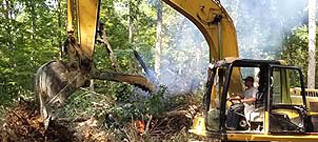Environmental Commentary by Bob Gallagher
Can a polluter who exceeds his pollution in one place make up for it by reducing pollution somewhere else? And does such a trade ultimately help the Chesapeake Bay recover?
Many say yes, and see such trades as a pragmatic solution to address mounting cleanup costs and to offset the pollution that comes with new growth.
But I suggest there are devilish details that need to be addressed before such trades will benefit the bay, and right now only two things seem clear: there are far more questions than answers, and it’s impossible to know if pollution trading will do more harm than good for bay restoration.
The basic idea of the multi-state Chesapeake Bay restoration plan – the blueprint officially called a Total Maximum Daily Load (TMDL) that sets annual pollution limits – is that the bay can only handle a set amount of pollution each year and still survive.
Each state has pollution limits and each has drawn up plans to meet those limits. If all the plans are translated into actions – upgrades to wastewater treatment plants, improved stormwater runoff management, best management practices on farms, and less sprawl development – the bay should meet federal clean water standards sometime after 2025. But the costs of the required actions are in the billions of dollars throughout the watershed and in the millions of dollars in even the smallest municipalities.
Many environmental economists believe that one way to reduce the costs of compliance is to permit a polluter to avoid costly pollution reduction measures by purchasing credits from another polluter who has reduced pollution less expensively and by more than the amount he is required to, and therefore has an excess – a credit – to sell. This is the essence of pollution trading. The overall pollution limits would be satisfied, but at an overall lower cost.
Under the TMDL, the Environmental Protection Agency requires states to develop programs that are credible and transparent to offset increased nutrient loads from growth. State plans governing these growth offsets are due by 2013.
In Maryland, a new law restricts certain developments that rely on septic systems and requires their pollution be “offset.” These growth offsets are a form of pollution trading. Developers will have to create or purchase pollution credits generated by activities that reduce pollution beyond already required pollution reductions. The septic law took effect in July, adding urgency to the state’s efforts to define trading rules.
Unfortunately, Maryland’s draft regulations are notable for their glaring lack of details. There are just too many “known unknowns.”
Will sellers of pollution credits be paid for practices that don’t work or for doing something they were supposed to do anyway? Is one pound of pollution from a development on the Western Shore equal to a pound of pollution reduced by a cover crop on Maryland’s Eastern Shore? Should we let polluters in one state trade with pollution preventers in another?
How do we explain to residents that we’ve allowed more pollution in one river in order to reduce pollution in another? Will allowing more pollution in certain areas hurt minority and poor communities?
Will we, as some suggest, give polluters the ability to buy the right to pollute by paying a fee in lieu of offsetting their pollution?
And who’s going to make money from trading? Aggregators are expected to develop a pollution credit market and “bundle” pollution credits to make it easier for trades to happen. How will aggregators be held accountable? If the aggregators’ primary interest is making a buck, who will protect clean water and public health?
Finally, a big concern – what if states don’t meet their pollution caps, but permit pollution trading anyway? Then we’ll really be piling it on the Bay and our local waters.
Many advocates believe that trading might offer a cost-effective way to clean up our waters, and that there is no other way to handle additional pollution from growth. Others are so concerned about a potential trading disaster that they are suing to have it stripped from the Bay cleanup plan altogether.
What everyone can agree on is the need to address details.
If trading is going to happen, there must be verification – is a credit real, did the pollution reduction happen? There must be transparency – the proof that credits are supported by pollution reductions must be publicly available. And there must be enforcement – the government must be given the resources and the public must have the right to enforce the law if a credit fails to produce a promised pollution reduction. Without these three elements, no trading or offset market can be effective.
The devil is in the details and ultimately, if I can’t swim in the West River or eat my catch from the Rhode River, millions spent on pollution credits will mean nothing.
Bob Gallagher is the founder and chairman of the board of the West/Rhode Riverkeeper organization. Distributed by Bay Journal News Service.


